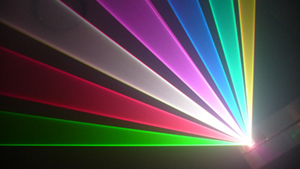

Originally Posted by
DMills

Indeed.
Totally wild guess, take a DLP chip, add a lens as if you were building a video projector (but made to pass far IR), now replace the lamp with a thermopile (or other non imaging IR sensor), apply suitable video signals while monitoring the thermopile output and you have effectively built a flying spot scanner in the deep IR (The spot size is variable so you can do a fast course scan then narrow down once you have some targets). In practise you would play clever binary search games to optimise acquisition time.
You would want to cool the mirror array and the sensor for best sensitivity, peltier effect in a toy, or expand a small tank of liquefied gas across the sensor in a real one (and an N2 fill would be good to prevent condensation).
An IR Missile guidance camera that John Logie Baird would have recognised!
Just a wild guess, but it seems like something that would work.
In fact a fun lab experiment given that we have all these dead single chip video projectors kicking around these days might be to place a photodiode in place of the light source and make a flying spot video camera....
Regards, Dan.
spreading democracy and building jobs for americans one boom at a time.
Pat B
laserman532 on ebay
Been there, done that, got the t-shirt & selling it in a garage sale.
).





 Reply With Quote
Reply With Quote


